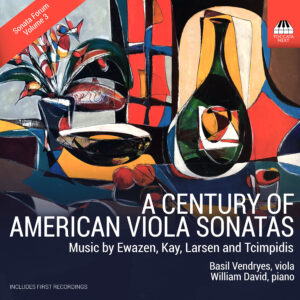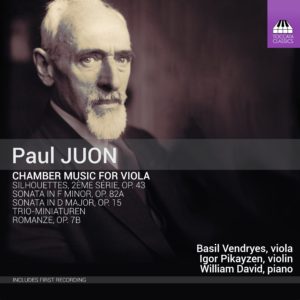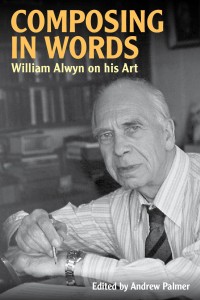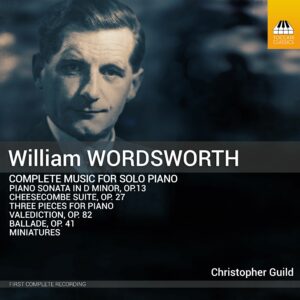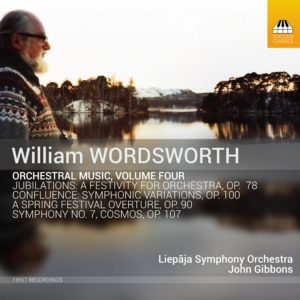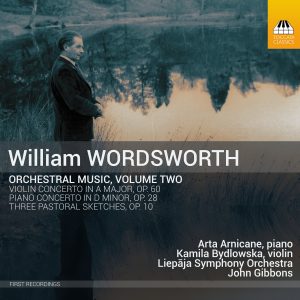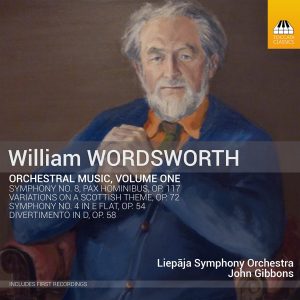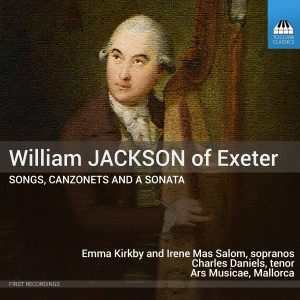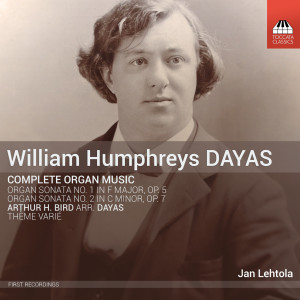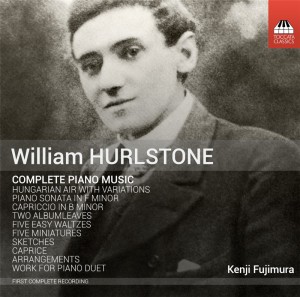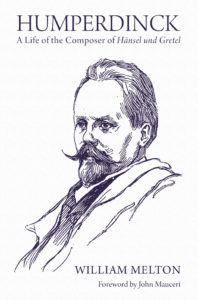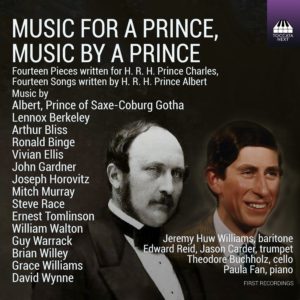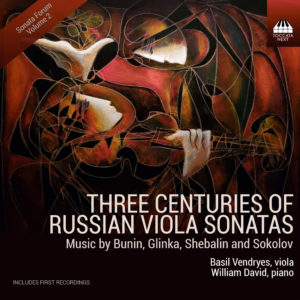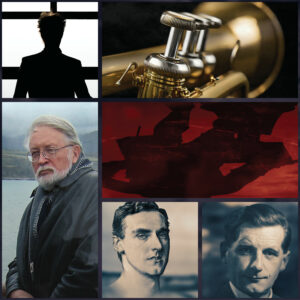Search Results for "obras de william makepeace thackeray"
Showing results for operas william magpies teacher
A Century of American Viola Sonatas
These five works – four sonatas and a sonatina – chronicle a century of American writing for the viola and are linked by a concern for directness of musical language. But they also reflect diversity in their origins and inspirations, the Ulysses Kay pieces being written by a pioneering African American, Libby Larsen’s by a successful female freelance composer, Eric Ewazen’s animated by a particularly American lyricism and energy, and the sonata by David Tcimpidis commemorating the ‘9/11’ terrorist attack on the World Trade Center, which Tcimpidis heard unfolding.
Basil Vendryes, viola
William David, piano
Paul Juon: Chamber Music for Viola
Paul Juon was born in Moscow, of Swiss parents, in 1872, studying there with Arensky and Taneyev; Rachmaninov, a fellow student at the Moscow Conservatoire, dubbed him ‘the Russian Brahms’. Woldemar Bargiel, Clara Schumann’s half-brother, was his main teacher at the Hochschule für Musik in Berlin before Juon himself became a member of the staff. There are indeed echoes of Brahms in Juon’s early music but there is also a fondness for Russian folksong and a mastery of counterpoint, which all feed into his urgent, late-Romantic lyricism.
Basil Vendryes, viola
Igor Pikayzen, violin (Tracks 8–18)
William David, piano
Composing in Words: William Alwyn on his Art
Edited by Andrew Palmer
Extent: 300 pages
Composition: Royal octavo
Illustrations: 26 b/w
William Wordsworth: Complete Music for Solo Piano
The reputation of the Anglo-Scottish composer William Wordsworth (1908–88), great-great-grandnephew of the poet, has recently been restored by a series of Toccata Classics albums of his orchestral music. His piano music, too, was poorly known before now, none of it recorded since a handful of pieces appeared on LP 60 years ago – though his epic Piano Sonata is a work of major importance. This first ever complete recording reveals an honest, unfussy approach to the keyboard akin to that of two other major symphonists, Sibelius and Rubbra: like them, Wordsworth’s primary concern seems to have been the expression of deep feeling – which makes the gentle story-telling of his miniatures for children all the more surprising.
Christopher Guild, piano
William Wordsworth: Orchestral Music, Volume Four
The music of William Wordsworth (1908–88) – a great-great-grandson of the poet’s brother Christopher – lies downstream from that of Vaughan Williams and Sibelius; like that of his contemporary Edmund Rubbra, Wordsworth’s music unfolds spontaneously, as a natural process. This fourth volume of his orchestral works presents four works which are all symphonic studies in essence, each remarkable for its unassertive strength of purpose and its suggestion of a sense of scale beyond its actual dimensions – perhaps in part a reflection of the majesty of the Scottish Highlands where he made his home, and of the quiet resolve of his own character.
Liepāja Symphony Orchestra
John Gibbons, conductor
Līga Baltābola, violin (Track 10)
William Wordsworth: Orchestral Music, Volume Three
The music of William Wordsworth (1908–88) – a great-great-grandson of the poet’s brother Christopher – lies downstream from that of Vaughan Williams and Sibelius; like that of his contemporary Edmund Rubbra, Wordsworth’s music unfolds spontaneously, as a natural process. This third volume of his orchestral works brings two major scores in their first studio recordings. Wordsworth’s Cello Concerto is a work of symphonic proportions, blending angular rough-and-tumble with a sober lyricism in a style that sits somewhere between Shostakovich and Bloch. The Fifth Symphony has an even grander sense of scale, its radiant first movement and the introduction to the confident finale unfolding as calmly and unhurriedly as a change of season; the martial tone of the gruff scherzo, by contrast, is laced through by an impish sense of humour.
Florian Arnicans, cello (Tracks 1-3)
Liepāja Symphony Orchestra
John Gibbons, conductor
William WORDSWORTH: Orchestral Music, Volume Two
The music of William Wordsworth (1908–88) – a great-great-grandson of the poet’s brother Christopher – lies downstream from that of Vaughan Williams and Sibelius; like that of his contemporary Edmund Rubbra, Wordsworth’s music unfolds spontaneously, as a natural process. This second volume brings two concertos, both major works – though long forgotten, and contrasted in their approach: the gritty and muscular Piano Concerto is cast in a single, tightly argued span, whereas the lyrical Violin Concerto is expansive and unhurried – and deeply touching. They are complemented by the Three Pastoral Sketches, which grow gently from understated autumnal hues to a dignified and moving climax. All three scores show an extraordinary command of orchestral colour.
Arta Arnicane, piano (Tracks 1-5)
Kamila Bydlowska, violin (Tracks 9-11)
Liepāja Symphony Orchestra
John Gibbons
William Wordsworth: Orchestral Music, Volume One
The music of London-born William Wordsworth (1908–88) – a great-great-grandson of the poet’s brother Christopher – lies downstream from that of Vaughan Williams and Sibelius. Like that of his contemporary Edmund Rubbra, Wordsworth’s music unfolds spontaneously, as a natural process, with a sense of grandeur perhaps enhanced by his move to the Scottish Highlands in 1961. Three of the four works recorded here display the sober dignity of the instinctive symphonist; the Variations on a Scottish Theme reveal a sly sense of humour behind the serious countenance.
Liepāja Symphony Orchestra
John Gibbons, conductor
William Jackson: Songs, Canzonets and a Sonata
William Jackson of Exeter (1730–1803) – a painter and writer as well as a composer – has been, until now, something of a hidden treasure. As Timothy Roberts writes in his introduction to this first album of Jackson’s music, ‘his songs are rooted in English traditions, and if his harmonies rarely move beyond those of Corelli and Handel, Jackson’s emphasis on sensibility also brings hints of early Romanticism’. ‘His melodies were pure and natural’, as one contemporary observed, resulting in music that is both elegant and charming.
Emma Kirkby, soprano (Tracks 3, 5, 6, 13, 14, 16, 19)
Irene Mas Salom, soprano (Tracks 2, 3, 6, 13, 14, 16, 19), violin (Tracks 7, 9–11)
Charles Daniels, tenor (Tracks 1, 5, 7, 12, 15, 17)
Maria-Antònia Melià, flute (Track 4)
Bernat Cabot, violin (Tracks 7, 9–11)
Cristina Trenchs, viola (Tracks 9–11)
Sylvia Serrano, cello (Tracks 9–11, 12)
Timothy Roberts, harpsichord (Tracks 9–11)
Ars Musicae, Mallorca (Tracks 1–8, 12–19)
William Humphreys DAYAS: Complete Organ Music
The American William Humphreys Dayas (1864–1903) studied with Liszt, was friends with Busoni and became a major piano teacher, spreading the message of Liszt’s music to his students in Helsinki, Wiesbaden, Cologne and Manchester, where his short life came to an end. Dayas left only a handful of compositions, but they include two major organ sonatas – passionate, Lisztian works that have remained completely unknown until now. Dayas also arranged for organ the Thème varié for piano four hands by another forgotten American composer, Arthur H. Bird (1856–1923), a further important addition to the late-Romantic organ repertoire.
Jan Lehtola, Walcker Organ of St. John's Church, Helsinki
William Hurlstone: Complete Piano Music
London-born William Yeates Hurlstone was only 30 when he died, in May 1906, and yet the music he was able to compose during his short life shows remarkable accomplishment. This CD presents the first-ever recording of his complete piano music, which develops from confident childhood essays, takes on board the influences of Chopin and Brahms, and matures into an assured and natural style balancing lyricism and drama.
Kenji Fujimura, piano
William Beaton Moonie: Chamber and Instrumental Music, Vol. One: Music for Solo Piano
The music of the Edinburgh composer William Beaton Moonie (1883–1961) is as good as unknown. This first-ever album devoted to his piano music reveals a figure downstream from Schumann, Brahms and Grieg, writing in a conservative Romantic idiom coloured by echoes of the folk-music of his native Scotland. Many of these pieces, indeed, are concerned to evoke images of the Scottish countryside or suggest aspects of Scottish history.
Christopher Guild, piano
Humperdinck: A Life of the Composer of ‘Hänsel und Gretel’
by William Melton
Foreword by John Mauceri
Royal octavo (253 mm x 158 mm)
456pp
81 illustrations
61 music exx.
Catalogue of Works
Bibliography
Format: Hardback
Music for a Prince, Music by a Prince: Fourteen Pieces written for H. R. H. Prince Charles, Fourteen Songs written by H. R. H. Prince Albert
This unusual recording brings princely offerings of two different kinds. In 1970 Prince Charles – who had studied cello and trumpet – was presented with a leather-bound volume containing pieces written for his entertainment by the composers on the council of the Performing Right Society. These fourteen bonnes bouches are complemented by fourteen German Lieder written by Prince Charles’ great-great-great-grandfather, Prince Albert, the Prince Consort, whose style owed something to that of his good friend, Felix Mendelssohn.
Jeremy Huw Williams, baritone (Tracks 15, 18–31)
Theodore Buchholz, cello (Tracks 1, 2, 4, 6-9, 11-14, 17)
Edward Reid, trumpet (Tracks 3, 4, 5, 8, 10, 11, 14)
Jason Carder, trumpet (Track 16)
Paula Fan, piano (Tracks 1-7, 10, 12, 14-31)
Three Centuries of Russian Viola Sonatas
The Russian viola sonata is a rare bird, not least because the instrument itself was frowned upon by the Soviet authorities; as a result Russian music for the viola has a rather patchy history. It begins in earnest in 1931, when the 1825 Sonata by Mikhail Glinka, ‘the father of Russian music’, was reconstructed from his sketches by Vadim Borisovsky, ‘the father of the Russian viola’. Thereafter, musicians and composers worked together to expand the repertoire. The relationship between the composer Revol Bunin and the violist Rudolf Barshai resulted in a sonata of 1955 which deserves wider currency. Although half a century apart, the Shebalin and Sokolov sonatas have something unusual in common: both were created as part of a triptych, alongside sonatas for violin and cello. All four composers knew how to make the viola sing – though this lyricism is often animated by moments of drama and excitement.
Basil Vendryes, viola
William David, piano
September 2023 Double Bundle
Included in this bundle:
Stay In the Know
JOIN THE TOCCATA NEWSLETTER
"*" indicates required fields
By visiting our site, you agree to our privacy policy regarding cookies, tracking statistics, etc.
